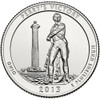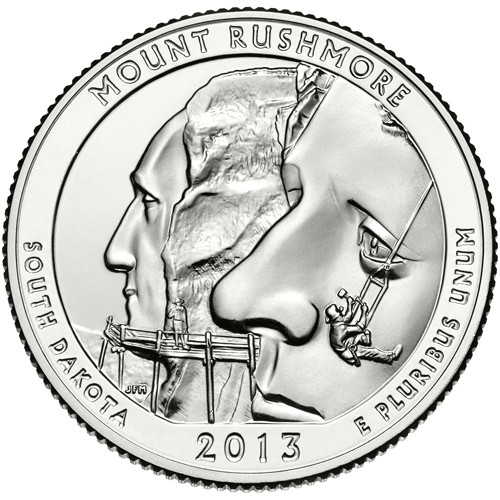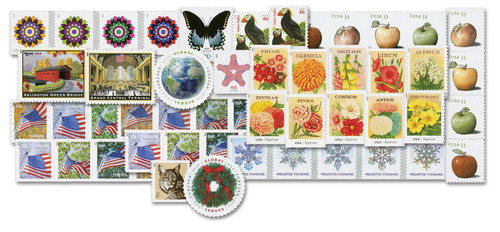
# CNOHVI25D - 2013 Perry's Victory International Peace Memorial Quarter, D Mint
Perry's Victory and International Peace Memorial Quarter
Denver Mint
Issue Date: April 1, 2013
Issue Quantity: 131,600,000
Perry's Victory and International Peace Memorial Quarter Design Elements: Statue of Oliver Hazard Perry and Peace Memorial in distance
When the War of 1812 began, the United States Naval Force was inadequate. Oliver Hazard Perry was appointed chief naval officer on Lake Erie and oversaw the construction of new ships.
By 1813, Perry was in command of a small fleet. In September, they fought against the British Navy, the most powerful naval fleet in the world at the time. Before the battle, Perry said, “If a victory is to be gained, I will gain it.” Using the tactics of Britain’s Lord Nelson, his ships overpowered the enemy. Perry’s report to his superior officer explained the outcome in just a few words: “We have met the enemy and they are ours; two ships, two brigs, one schooner and one sloop.”
The victory on Lake Erie marked the first time in history a British squadron had surrendered. Without their vessels, the English couldn’t resupply their forts along the lake’s shores. They soon retreated to Canada, and Lake Erie stayed in American hands for the remainder of the war.
In the early 1900s, talks began concerning some way to commemorate Perry’s victory at Lake Erie. A multi-state commission was formed and nine states donated the funds to build a memorial.
Construction began in 1912 in Put-in-Bay, Ohio. Beneath the monument’s stone floor are the bodies of six officers killed in the battle – three British and three American. The monument was officially dedicated on July 31, 1931. Four years later, President Franklin D. Roosevelt established it as Perry’s Victory and International Peace Memorial National Monument. In 1972, it was re-designated a National Memorial.
At 352 feet tall, the monument is the world’s most massive Doric (Greek style) column. It is also one of the tallest monuments in the United States.
Perry's Victory and International Peace Memorial Quarter
Denver Mint
Issue Date: April 1, 2013
Issue Quantity: 131,600,000
Perry's Victory and International Peace Memorial Quarter Design Elements: Statue of Oliver Hazard Perry and Peace Memorial in distance
When the War of 1812 began, the United States Naval Force was inadequate. Oliver Hazard Perry was appointed chief naval officer on Lake Erie and oversaw the construction of new ships.
By 1813, Perry was in command of a small fleet. In September, they fought against the British Navy, the most powerful naval fleet in the world at the time. Before the battle, Perry said, “If a victory is to be gained, I will gain it.” Using the tactics of Britain’s Lord Nelson, his ships overpowered the enemy. Perry’s report to his superior officer explained the outcome in just a few words: “We have met the enemy and they are ours; two ships, two brigs, one schooner and one sloop.”
The victory on Lake Erie marked the first time in history a British squadron had surrendered. Without their vessels, the English couldn’t resupply their forts along the lake’s shores. They soon retreated to Canada, and Lake Erie stayed in American hands for the remainder of the war.
In the early 1900s, talks began concerning some way to commemorate Perry’s victory at Lake Erie. A multi-state commission was formed and nine states donated the funds to build a memorial.
Construction began in 1912 in Put-in-Bay, Ohio. Beneath the monument’s stone floor are the bodies of six officers killed in the battle – three British and three American. The monument was officially dedicated on July 31, 1931. Four years later, President Franklin D. Roosevelt established it as Perry’s Victory and International Peace Memorial National Monument. In 1972, it was re-designated a National Memorial.
At 352 feet tall, the monument is the world’s most massive Doric (Greek style) column. It is also one of the tallest monuments in the United States.







